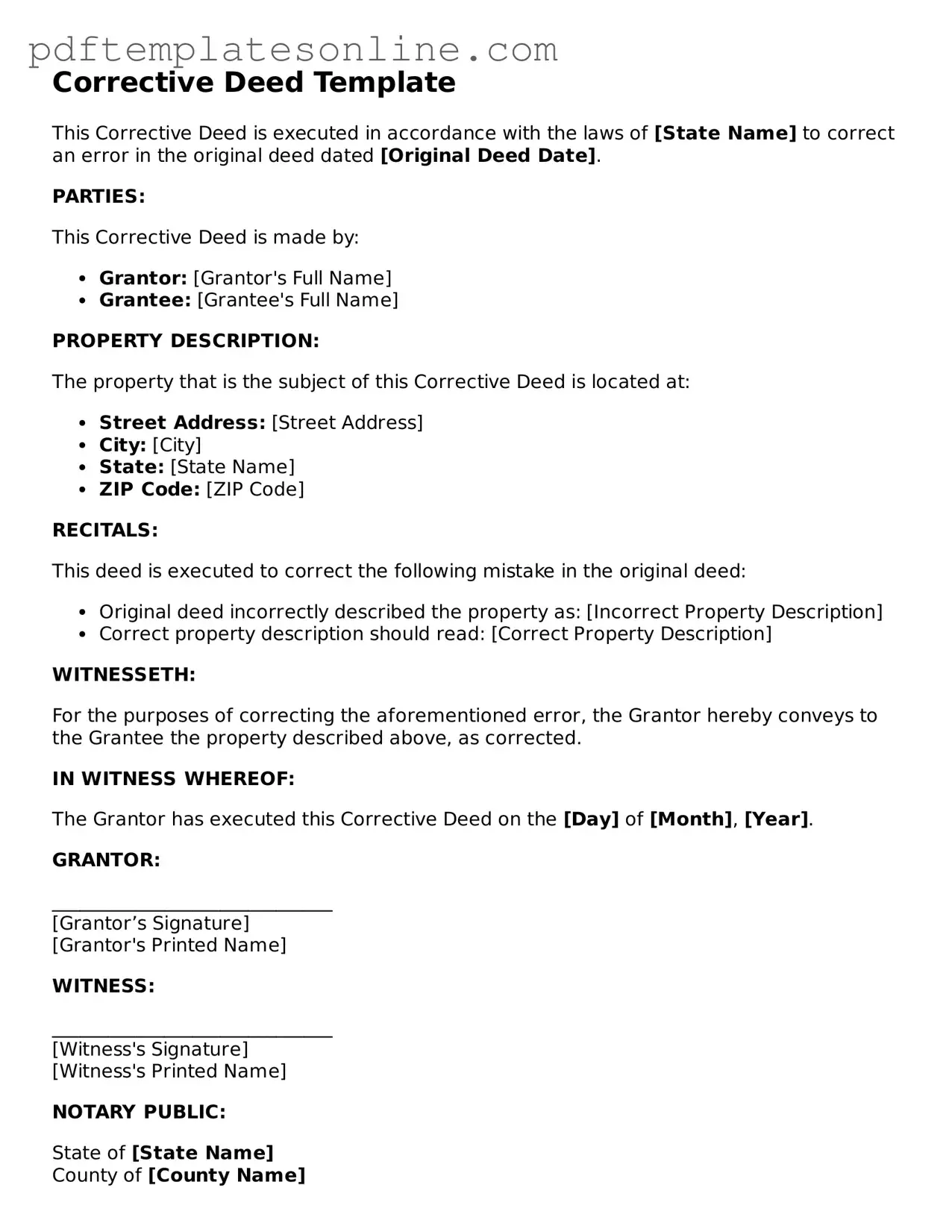Fillable Corrective Deed Document
A Corrective Deed is a legal document used to correct errors or omissions in a previously recorded deed. This form ensures that the property records accurately reflect the intentions of the parties involved. By filing a Corrective Deed, individuals can resolve discrepancies that may affect property ownership or transfer rights.
Access Corrective Deed Editor Now
